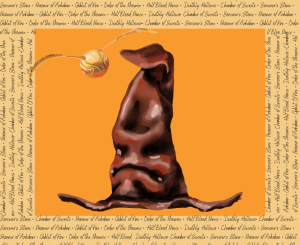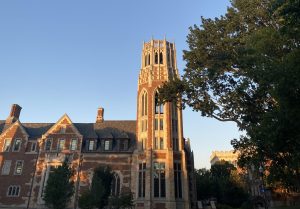Vanderbilt appealed to me for a variety of reasons when college searching. It excelled in many areas such as academics, athletics and student happiness. Another huge factor to me, despite my parents’ warnings, was the weather. Having lived in Minnesota my whole life, I was excited to exchange the -50 degree winter days for the sunny, warm climate of Nashville. Little did I know that Tennessee has the country’s sixth highest annual rainfall at about 54 inches according to Current Results annual precipitation measurements. I wouldn’t be surprised if that statistic was exceeded just in the first few weeks of classes. During one particularly grueling rainy walk from Sarratt to Sutherland (yes, the dorm furthest from literally everything), I began to wonder: is there a way we could harvest the energy in rain to produce green energy?
I soon discovered that piezoelectric technology has these capabilities. Piezoelectric material, which comes from the Greek word “to push,” generates an electrical potential energy when a force interacts with it, such as a raindrop falling upon its surface. Jean-Jacques Chaillout, a researcher at the French atomic energy commission, headed a team of scientists to determine rain’s energy generation through the new technology. Using only a 10 cm long and .0025 cm thick strip of piezoelectric material, the group found that the rain produced between one nanojoule and 25 microjoules of energy per drop depending on its size. A slight sprinkle produces nearly one microwatt of power. For reference, a typical light bulb uses 100 watts per hour. On a larger scale, houses typically need between 3000 to 6500 watts. Additionally, the energy generation of downpours is expected to be much more significant. Chaillout’s group is working on making the technology more pressure-sensitive, allowing for greater energy generation. However, rain will likely not be a huge energy generator when using this material.
Walking has taken rain’s place in recent piezoelectric research projects. In Japan, piezoelectric floors have been tested in the Tokyo and Shibuya train stations. Enough electricity is generated to power all the automatic ticket gates and electronic display systems there. It has even been tested in London nightclubs where the dance floors are powered using this technology. Imagine implementing this on the Vanderbilt campus. Over 6,800 undergrads walk to and from Main Campus daily. My friends and I average almost 20,000 steps per day, and I’m sure most students’ counts are similar. If piezoelectric sidewalks and floors were implemented on campus in highly populated areas such as Rand and the 21st Avenue Bridge, whole buildings and dorms could be powered just through our daily commutes. Other colleges such as Rutgers University have already begun planning to implement the technology. Those institutions, like I suggested, plan to place the tiles in high-traffic areas near bus stops and post offices.
Cost is the only inhibitor for investing in this material, though its cost is likely to diminish in the future. Current prices are about $200 per tile. The nightclubs mentioned above cost between $700,000 to $800,000 to furnish. While this is an exceedingly high price tag, prices have dropped 70 percent in the past year and are expected to continue rapidly declining according to a study by Stanford University. As cost continues to decrease, piezoelectric technology becomes a better and better investment, both economically and environmentally.
While I may not have anticipated the plethora of rain I was greeted with when I came to campus, I appreciate its environmental value. While I’m not super hype about all of the downpours and walking I’ve experienced at Vanderbilt, I’m glad that there’s a potential benefit to them. Thanks to piezoelectric materials, both rain and footsteps have electric potential. With further experimentation, this material can easily generate huge amounts of energy. Hopefully, piezoelectric technology will soon be implemented within the Vanderbilt campus and throughout the world.











